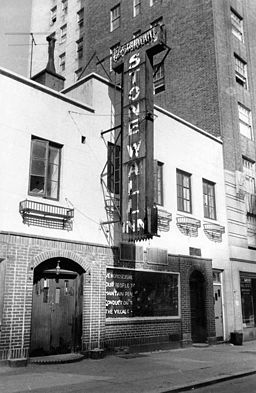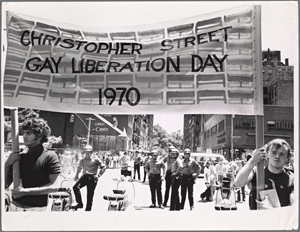 Putting up shopping centers is big business. Some may cringe when they read of another strip mall going up in their town or pound their fist on the steering wheel when they see a Coming Soon! sign on a wooded lot, announcing another shopping center.
Putting up shopping centers is big business. Some may cringe when they read of another strip mall going up in their town or pound their fist on the steering wheel when they see a Coming Soon! sign on a wooded lot, announcing another shopping center.
Years ago, it was normal to visit a shopping mall a few times a year to shop at a chain retailer that could not be found in the local downtown area. That mall was perhaps a 20 minute drive so it was not a regular part of the American routine. Today, the chain retailer needs to be right under our noses, at the shopping center around the corner. By car.
The public keeps shopping so the shopping centers keep coming. As of 2016, there were 115,622 shopping centers in the United States, according to the International Council of Shopping Centers (ICSC).
For those who think all shopping centers under a half-million square feet are called “strip malls,” here is the breakdown of the many categories of shopping centers. Cheers.
There are 112,315 General-Purpose Centers, which are comprised of the following categories: Super-regional malls, regional malls, community centers (aka large neighborhood centers), neighborhood centers and strip/convenience centers. http://www.icsc.org/uploads/research/general/US_CENTER_CLASSIFICATION.pdf
There are also 3,245 specialized-purpose Centers in the U.S., 2244 of which are Power Centers and 478 are Lifestyle Centers. Factory outlets and theme centers are also part of this group, with 364 and 159, respectively.
Super-Regional and Regional Malls
These shopping centers are the traditional malls, massive in size and located on the outskirts of a town that is probably not yours. They would not be considered strip malls to even the least discerning eye.
There are 622 super-regional malls in the U.S. and the average size is 1,244,637 square feet on 60 to 120 acres. These malls have three or more anchors which are typically full-line or junior department stores, mass merchants, discount department stores and fashion apparel stores. They feature a large variety of general or fashion-related inventory. Commonly, they are enclosed structures with stores facing inward and connected by a shared corridor. The parking areas surround the perimeter of the building. Their trade area size is five to 25 miles.
Regional malls are similar in concept to super-regional malls. There are 600 in the U.S. and the average size is 590,891 square feet on 40 to 120 acres. They typically have two or more anchors that feature general or fashion merchandise. Their trade area size is five to 15 miles.
Community (“Large Neighborhood”) and Neighborhood Centers
When we get to the community center, also referred to as the large neighborhood center, some start thinking “strip mall.” These shopping centers feature general or convenience-oriented inventory and a broader range of apparel and other soft goods than the smaller “neighborhood centers.” The center is usually laid out in a straight line as a strip, an L or a U shape, and they average an area of 197,378 in square feet and sit on 10 to 40 acres.
These malls typically have two or more anchors that feature a Discount store, supermarket, drug, large-specialty discount (toys, books, electronics, home improvement/furnishings or sporting goods, etc.). Their trade area covers three to six miles. The tally for community centers in 2016 was up to 9,746 in the U.S.
Neighborhood centers are convenience-oriented. There are 32,506 in the U.S. and the average size is 72,912 square feet situated on three to five acres. These malls typically have one or more anchors such as supermarkets and feature five to 20 tenants. Their trade area size is three miles.
Strip/Convenience Center
The strip or convenience center is the quintessential strip mall. It features an attached row of stores and is managed as a clear retail entity, with parking usually located in front of the stores. A strip center is typically configured in a straight line, an L or a U shape and does not have enclosed walkways connecting the stores.
They are among the smallest of the centers with an average size of 13,229 square feet built on three or fewer acres. They commonly have a small convenience-store as an anchor or no anchor at al. Tenants in the shopping center offer a narrow mix of goods and personal services to a trade area of less than one mile. There are a whopping 68,841 of them in the U.S.
Power Center
These shopping centers have “category killer” anchors, such as home improvement, discount department, warehouse club and off-price stores with only a few small tenants. There are 2,244 in the U.S. and the average size is 437,390 square feet on 25-80 acres. Their trade area size is five to 10 miles.
“Category Killers,” for those who ask, are highly focused retailers specializing in a category of goods, such as Barnes & Noble, Best Buy, and Staples, whose broad assortment, aggressive pricing, large stores, massive networks, and proficiency in their categories give them a huge competitive advantage.
Lifestyle Center
These shopping centers feature upscale specialty stores with dining and entertainment in an outdoor setting. There are 478 in the U.S. and the average size is 332,159 square feet on 10 to 40 acres. These malls typically have zero to two anchors, typically large format national-chain specialty stores. The trade area size for a lifestyle center is eight to 12 miles.
What to Build…
Before putting up a shopping center, the developer needs to determine what variation of the shopping center to build, as each type is designed to meet varying consumer needs. The developer must determine the demands of the marketplace and design the center and potential tenant mix to meet those demands.
The consumer is the starting point and votes with his or her feet. In the film Field of Dreams, a voice told Ray Kinsella, “If you build it, they will come.” In the shopping center development business, the same sentiment appear to exist. And they must be coming because it is being built. At a cleared lot near you.
Categories: SUBURBAN SPRAWL






